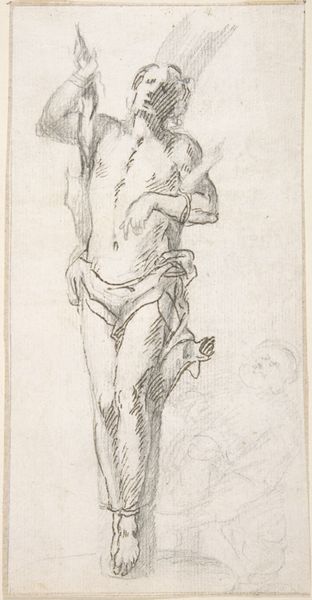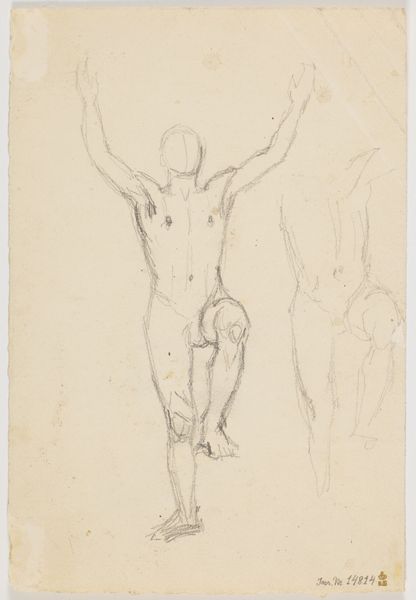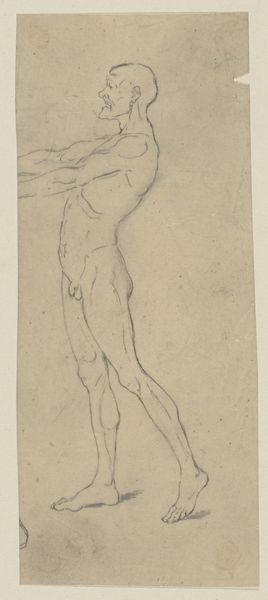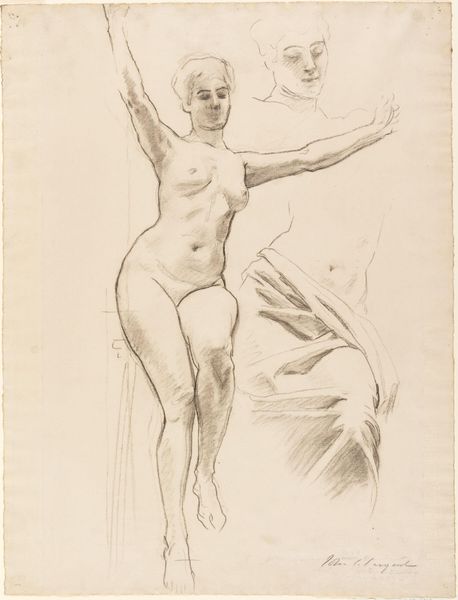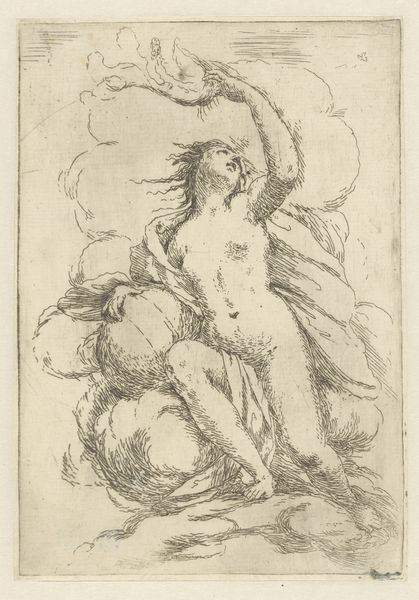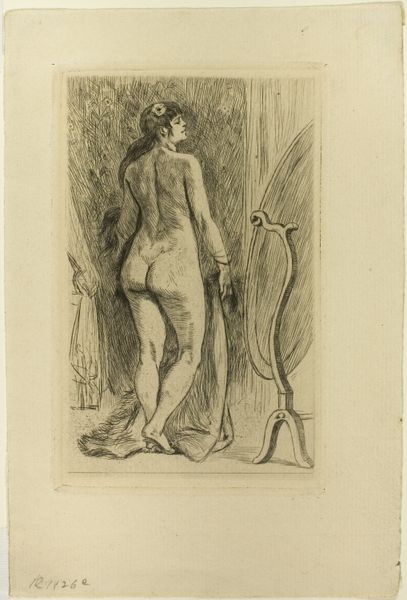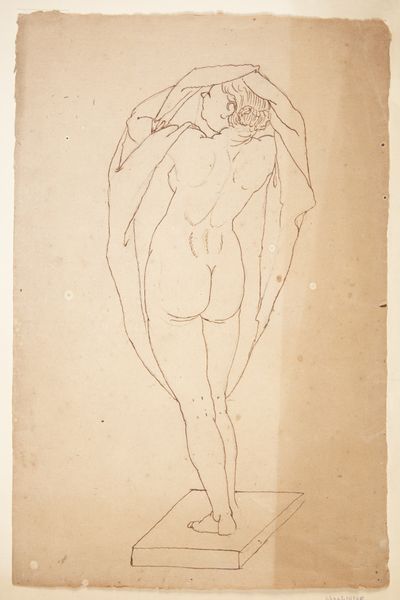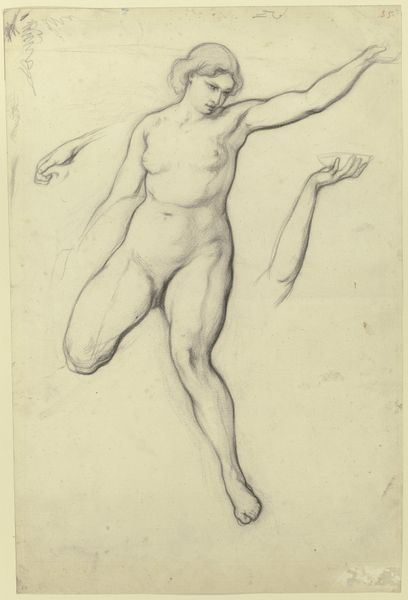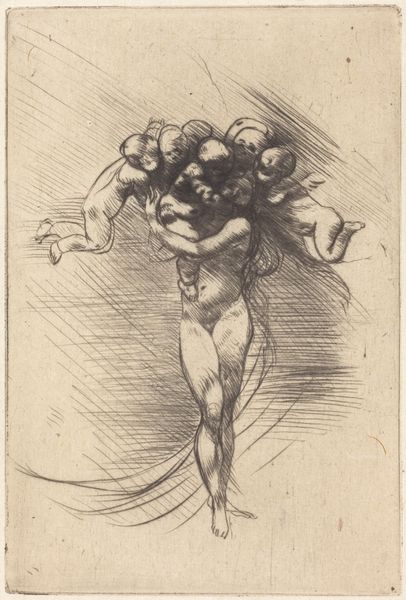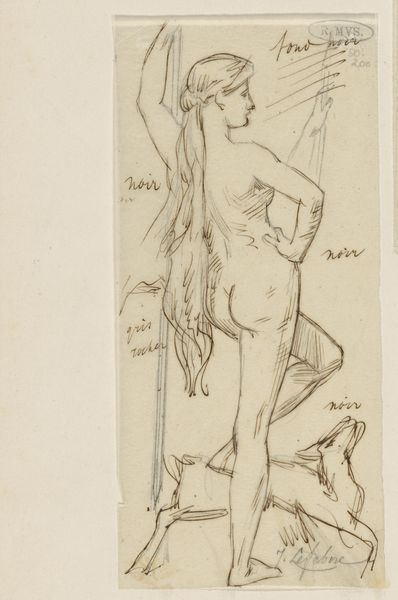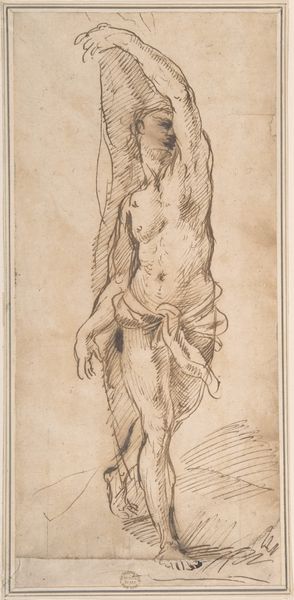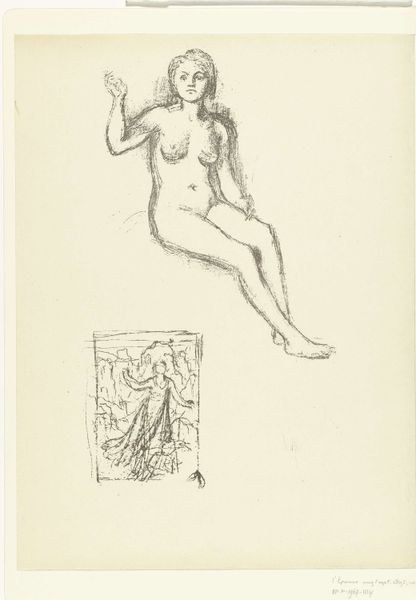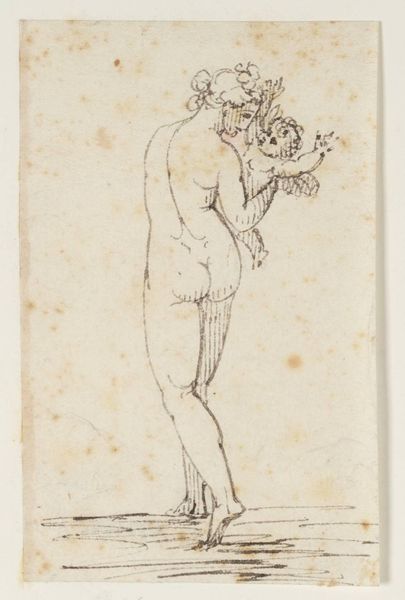
drawing, paper, pencil, graphite
#
drawing
#
ink drawing
#
pen drawing
#
pen illustration
#
pen sketch
#
landscape
#
classical-realism
#
figuration
#
paper
#
pencil
#
graphite
#
nude
Dimensions: 570 × 345 mm
Copyright: Public Domain
Curator: I find this drawing, simply titled "Daphne," rather captivating. It’s of indeterminate date, rendered in graphite, pencil, and ink on paper and held here at the Art Institute of Chicago. Editor: Its haunting quality struck me first, that raw medium adding to the image's unsettling air, she's barely defined in line, seemingly becoming part of that sharp foliage that envelopes her. Curator: That's because it's a representation of the myth of Daphne. She was a nymph who, to escape the unwanted advances of Apollo, was transformed into a laurel tree. Editor: The tree motif becomes her identity and confines her figure using visual cues of classical-realism with expressive freedom. The stark hatching creates almost violent juxtapositions of dark and light, the figure being birthed or consumed into plant life. Curator: Transformation, yes, a potent symbol here. Note how the artist shows Daphne's form actively morphing. Her torso still human, her limbs beginning to meld with the trunk and branches of the tree, roots instead of feet taking over her form. She’s caught in the liminal space, the human and the arboreal entwined. Her hair is very free-flowing. Almost as if it is acting as both Daphne's and the tree's expression of liberation. Editor: The face does seem like the final vestige of selfhood to be given over. Is there any record on the motivations of this image? Curator: Little is known about the hand that crafted it; however, one could assume the artist desired to capture the pathos of that transition—a forced union with nature, the ultimate sacrifice of personal agency, her identity quite literally becoming rooted to the spot. It serves as a very profound observation on how external forces shape inner reality, a theme still poignant even to this day. Editor: Absolutely. And analyzing formal attributes of an otherwise figurative image like that provides much better insights. The work reveals both aesthetic achievement and social insight through that close looking.
Comments
No comments
Be the first to comment and join the conversation on the ultimate creative platform.
